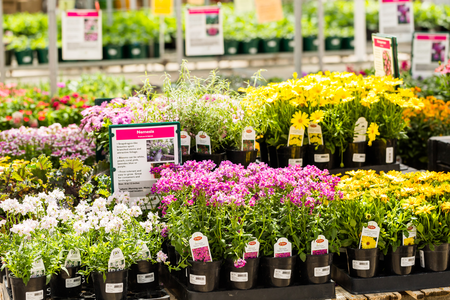What are Search Console errors?
Every now and then you’ll get an e-mail from Google Search Console stating your website has errors: help! A website shouldn’t have errors, so what do you need to do with these e-mails? Is there a reason to be concerned if you receive them? And why do you get them in the first place?
This blog is all about Search Console errors so you get a better understanding of how to interpret these e-mails. But before dive deeper into errors we need to look at what Search Console is, and how we use it.
What is Google Search Console?
Google Search Console, formerly known as Google Webmaster Tools, allows you to get an insight into your website's performance on Google. It will display all the indexed pages, metrics and data. Our online marketers use Search Console to monitor garden centre websites & webshops, find errors and troubleshoot issues.
Whenever we set up a website, we always integrate it with Search Console, link your sitemap and make sure Google can index all of your content. Truth be told, we rarely mention this to customers since Search Console is a bit technical, but it can be a useful tool. And on top of that: it’s completely free of charge!
But this blog isn’t about how to use Search Console, it’s about the errors Search Console sends to you. Here are a few examples of errors you might get:
1. Submitted URL marked ‘noindex’
Sometimes, you don’t want to have pages on Google. It’s irrelevant to have your privacy policy or shopping cart indexed by Google, for example. You can flag these pages as “noindex” on the Garden Connect Platform.
However, if you’ve submitted a list of pages Google might notice a discrepancy between the list of pages you submitted (normally all pages on your website) and settings on an individual level. That’s what this error is telling us.
2. Clickable elements too close together
Whenever we design and develop your garden centre website, we make sure people can click on all elements and have enough space between them. This assures your website is user friendly and visitors don’t accidentally click on the wrong items.
However, there can be a reason images are next to each other without space between them. For example, when you want to have a page with boxes and links but you prefer not to have blank space between them for branding and design reasons.
Another reason can be that you uploaded content to the website via the editor which is (too) close to other elements.
Google will flag these pages but it’s often caused by a decision made during the design process or by yourself while uploading content to the website. If the elements are big enough, and they normally are, you can ignore this error.
3. Text too small to read
This error is self-explanatory: Text has been added to your website which is too small to read. Whenever we design & develop your website, we make sure all font styles are set up correctly.
However, if any new text is added with reduced font size, it might cause issues since the text could be too small. If Google tells you the text is too small, it’s best to increase the size immediately since your customers won’t be able to read it!
If you use the font and styles we provide to you, you don’t need to worry about this problem.
4. Data-vocabulary.org schema deprecated
Data Vocabulary is a way to display rich search results and improved Google rankings significantly for many of our customers.
We’re sure you recognize rich search results like this one:

Or this one, showing the price of an item:

In the old days (we’ve been around since 2002 so we remember the old days!), Google pushed the use of a gimmick called Data Vocabulary to show these rich features. However, Google shut down this option in April 2020 and replaced it with Schema.org. That sounds a bit technical but for various reasons, we decided to implement Schema.org (back in 2018) and will keep Data Vocabulary on your website for at least another 6 months.
Other sites/search engines are still using it for the time being so we don’t want to remove it too quickly. One might argue if this is an error, Google is moving from one solution to another and we’re moving with them but we don’t want your website to loose visitors while doing so.
How does Garden Connect solve these errors?
So now you know a bit more about these errors, but how do we solve them? The Garden Connect platform is Google-friendly and compatible with Search Console. However, as you’ve seen in the previous paragraphs there can be reasons why you’re getting errors:
- By updating your website, a link might have been broken or a mistake was made
- Google Search console added a new check
- Google removed items from their guidelines and you still have them on your website
- Branding and design are sometimes more important than a specific Google requirement
Whenever Google mentions an error, it’s not always literally an error. Often, it’s a suggestion to improve your garden centre website or webshop. We’re happy Google is sending out these messages since it creates awareness about improvements and websites do need attention (and some love) to keep them in shape although it can confusing to call them all “errors”.
Our online marketeers monitor errors on individual websites while doing their monthly audits and our developers keep an eye on any general updates Google is doing.
So next time you receive an e-mail with a Search Console error: keep calm and carry on!



